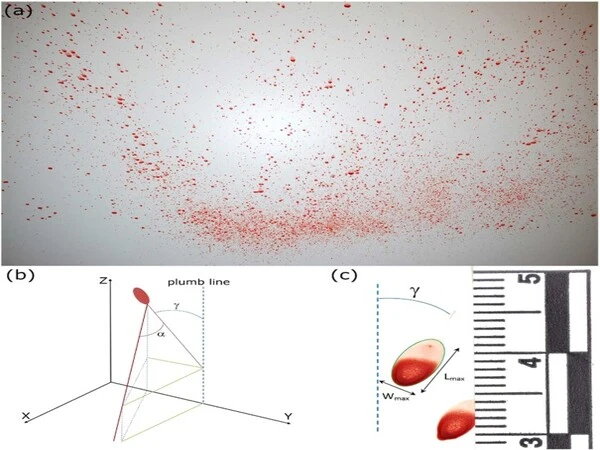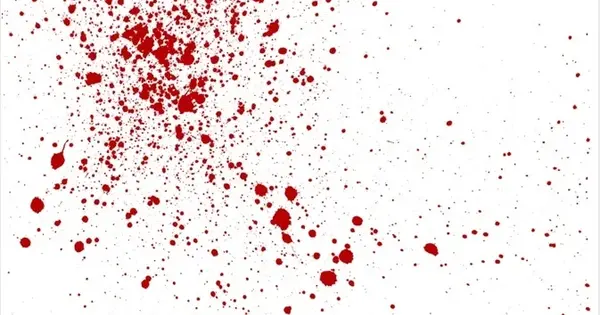Bloodstain pattern analysis (BPA) is a forensic technique used to investigate crime scenes and reconstruct events by analyzing blood spatter patterns. One promising approach to improving BPA is to apply fluid dynamics principles to better understand how blood behaves when it is in motion.
Researchers simulate the behavior of blood drops during secondary atomization to see how it affects a crime scene. Experiments confirmed the team’s model by examining different starting droplet sizes. They discovered that secondary atomization had a significant and predictable effect: smaller droplets were easier for the firearm’s gases to sweep up and turn around toward the victim. This discovery could explain how a close-range shooter can avoid blood stains.
Blood back spatter, which is frequently left on the surfaces of a crime scene or on the clothes of an accused criminal, can be used as evidence by forensic scientists to reconstruct what happened. However, the fluid dynamics at play are complicated, and neglecting the interaction between the blood and the muzzle gases from the firearm could skew the results.
The findings demonstrate the utility of multiphase flow fluid mechanics for the forensic discipline of back spatter analysis. Hopefully, the current code will be used in future crime scene investigations.
Alexander Yarin
In Physics of Fluids, by AIP Publishing, researchers from the University of Illinois Chicago and Iowa State University modeled the behavior of blood drops during secondary atomization to examine how the phenomenon affects a crime scene.
“A gunshot (bullet) causes primary atomization of blood.” “As a result, multiple drops are spattered in the air,” author Alexander Yarin explained. “Some of these drops are large enough that the air drag forces acting on a drop in flight can significantly distort and tear them apart. During this process, known as secondary atomization, smaller droplets form.”
The team tested their model with different starting droplet sizes and confirmed it with experiments. They discovered that secondary atomization had a significant and predictable effect: smaller droplets were easier for the firearm’s gases to sweep up and turn around toward the victim.

“Muzzle gases form a turbulent vortex ring which moves toward a victim from a shooter and pushes the blood droplets from the shooter back to the victim,” said Yarin. “Droplets are also deflected aside, and our predictions showed that some can even land behind the victim, even though initially they were moving from the victim toward the shooter.”
This discovery could explain how a close-range shooter can avoid blood stains, such as in the famous case of Phil Spector allegedly murdering Lina Clarkson while keeping his outfit practically spotless.
“The findings demonstrate the utility of multiphase flow fluid mechanics for the forensic discipline of back spatter analysis,” Yarin said. “Hopefully, the current code will be used in future crime scene investigations.”
The group hopes to investigate the spatter of brain tissue in similar short-range shooting events in the future. They believe that such research could aid in distinguishing between a suicide and a staged homicide.
Overall, applying fluid dynamics principles to bloodstain pattern analysis has the potential to improve the accuracy and reliability of this important forensic technique. However, it is important to note that this approach is still in its early stages and more research is needed to fully understand how fluid dynamics can be used to enhance BPA.
















